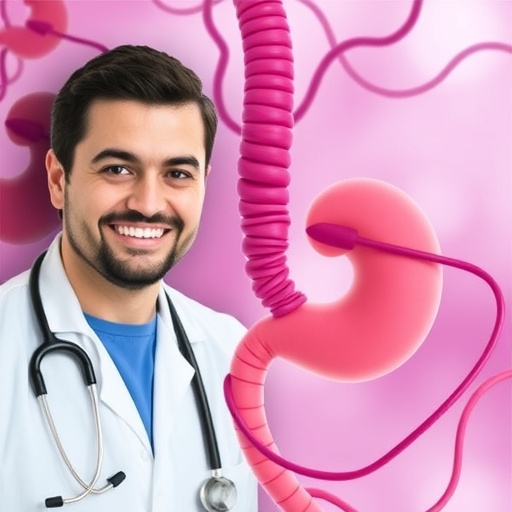In the US, prescription and illicit opioids are implicated in the deaths of approximately 500 children and adolescents per year

Credit: Pediatric Academic Societies
BALTIMORE – A new study shines light on pediatric opioid deaths by U.S. region, the first time a study of this nature has been conducted. Findings from the study will be presented during the Pediatric Academic Societies (PAS) 2019 Meeting, taking place on April 24 – May 1 in Baltimore.
“Although we know that nearly 10,000 children and adolescents died from opioid poisonings over the past two decades in the United States, we have little understanding of how kids in particular regions of the country have been affected by the opioid crisis,” said Julie Gaither, PhD, MPH, RN, the lead author of the study. “In this study, we found that while there was a four-fold increase in pediatric deaths from opioids in the Midwest, while there was only a two-fold increase in the West. Moreover, unlike with every other region of the country, there has not been a recent upsurge in deaths from heroin and illicit fentanyl in the western states.”
The study analyzed CDC mortality data–stratified by the four U.S. census regions–for children and adolescents less than 20 years of age who died from opioid poisonings between 1999 and 2016. Generalized smoothing spline Poisson regression was used to estimate mortality rates per 100,000.
Nationally, 8,986 children and adolescents died from opioid poisonings between 1999 and 2016; the pediatric mortality rate increased 268.2%, from 0.22 to 0.81 per 100,000. Mortality rates were highest in the Northeast in both 1999 and 2016 at 0.33 and 1.05, respectively, but the largest increase over time occurred in the Midwest, where rates rose by 429.4%, from 0.17 to 0.90. The smallest increase was in the West, where rates increased by 200.0%, from 0.19 to 0.57. In all regions but the West, there was a marked upswing in mortality rates between 2013 and 2016. This increase can be attributed to a recent surge in deaths from heroin and synthetic opioids (primarily illicit fentanyl) among 15 to 19-year-olds. In this group, heroin was implicated in 32.1% of all opioid deaths in the Northeast (highest proportion), compared to 18.3% in the South (lowest proportion). Similarly, synthetic opioids were implicated in 17.5% of opioid deaths in the Northeast, compared to 8.9% in the South.
In the U.S., pediatric mortality rates for opioid poisonings increased nearly 3-fold over 18 years; however, substantial variation exists in the degree to which children and adolescents in particular regions of the country were affected. Mortality rates in the Midwest increased more than 4-fold, compared to a 2-fold increase in the West. A better understanding of how fatal pediatric opioid poisonings vary geographically has the potential to aid in the development of targeted interventions to mitigate what is a growing public health problem for the young in the U.S.
Dr. Gaither added, “We are interested in finding out what is at the root of this variation, and whether there are public health policies in place in the West that are serving as safeguards for kids; and if so, how do we begin to implement them across the rest of the country?”
Dr. Gaither will present findings from “Geographic Variation in Pediatric Deaths from Prescription and Illicit Opioid Poisonings, 1999-2016” on Saturday, April 27 at 5:30 p.m. EDT. Reporters interested in an interview with Dr. Gaither should contact [email protected]. Please note that only the abstracts are being presented at the meeting. In some cases, the researchers may have additional data to share with media.
The PAS 2019 Meeting brings together thousands of pediatricians and other health care providers to improve the health and well-being of children worldwide. For more information about the PAS 2019 Meeting, please visit http://www.
###
About the Pediatric Academic Societies Meeting
The Pediatric Academic Societies (PAS) Meeting brings together thousands of pediatricians and other health care providers united by a common mission: to improve the health and well-being of children worldwide. This international gathering includes pediatric researchers, leaders in pediatric academics, clinical care providers and community practitioners. Presentations cover issues of interest to generalists as well as topics critical to a wide array of specialty and sub-specialty areas. The PAS Meeting will be the premier North American scholarly child health meeting. The PAS Meeting is produced through a partnership of four pediatric organizations that are leaders in the advancement of pediatric research and child advocacy: American Pediatric Society, Society for Pediatric Research, Academic Pediatric Association and American Academy of Pediatrics. For more information, please visit http://www.
Abstract: Geographic Variation in Pediatric Deaths from Prescription and Illicit Opioid Poisonings, 1999-2016
Background: In the U.S., prescription and illicit opioids are implicated in the deaths of approximately 500 children and adolescents per year. No study has yet examined geographic differences in fatal pediatric opioid poisonings.
Objective: To examine pediatric opioid deaths by U.S. region.
Design/Methods: We analyzed CDC mortality data–stratified by the 4 U.S. census regions–for children and adolescents
Results: Nationally, 8,986 children and adolescents died from opioid poisonings between 1999 and 2016; the pediatric mortality rate increased 268.2% (P trend
Conclusion(s): In the U.S., pediatric mortality rates for opioid poisonings increased nearly 3-fold over 18 years; however, substantial variation exists in the degree to which children and adolescents in particular regions of the country were affected. Mortality rates in the Midwest increased more than 4-fold, compared to a 2-fold increase in the West. A better understanding of how fatal pediatric opioid poisonings vary geographically has the potential to aid in the development of targeted interventions to mitigate what is a growing public health problem for the young in the U.S.
Authors (Last Name, First Name): Gaither, Julie R.; Shabanova, Veronika; Bechtel, Kirsten; Leventhal, John M.
Authors/Institutions: J.R. Gaither, V. Shabanova, K. Bechtel, J.M. Leventhal, Department of Pediatrics, Yale School of Medicine, New Haven, Connecticut, UNITED STATES
Media Contact
PAS
[email protected]




